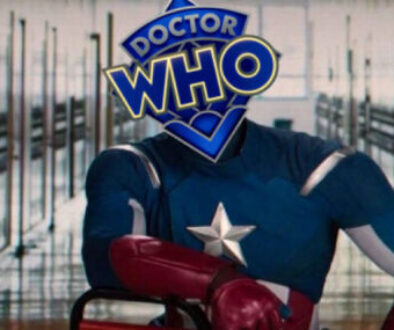Ghost Light in Perspective

Guest contributor Adam James Cuthbert revisits the complex 7th Doctor classic.
Ghost Light is notoriously known within the fandom for its complex storyline. The original idea for the story, entitled Lungbarrow, would have seen the Doctor returning to his ancestral home in South Gallifrey. It was rejected by producer John Nathan-Turner, who felt it revealed too much about the Doctor’s origins. However, with assistance from script editor Andrew Cartmel, writer Marc Platt was able to rework elements from his original script into a story set within a haunted house that would explore themes relating to evolution.
Ghost Light is regarded by the fandom as part of a series of stories throughout Seasons 25 and 26 that comprise ‘the Cartmel Masterplan’. Andrew Cartmel’s intention was to make the Doctor mysterious again by suggesting he was present at the foundation of Time Lord society. The Doctor would be revealed as the reincarnation of ‘the Other’. When the show was cancelled in 1989, after Ghost Light had been filmed, Cartmel’s plans for the show were instead incorporated into the BBC’s Virgin Books range, resulting in Marc Platt’s novel version of Lungbarrow in 1997.
Ghost Light is also significant for the ongoing character development of the companion Ace (Sophie Aldred). Cartmel had envisioned the Doctor taking Ace under his wing as a protégé. The Doctor would raise her to be accepted into the Time Lord Academy. He would then continue his travels with a new companion, Raine, a cat burglar, whose aristocratic demeanour would dramatically contrast with Ace’s working-class background.
Ace is portrayed here as bright and inquisitive, yet brash and impetuous. The Doctor brings Ace to the mansion Gabriel Chase in 1883 as part of an “initiative test”. Ace feels betrayed by the Doctor when she recognises the house. She burnt it down in her childhood, one hundred years later, after she sensed the pervading air of evil about it. Costume changes play an important role in emphasising Ace’s maturity throughout the story. She starts off wearing contemporary clothing, demonstrating her growing confidence about her own physical attractiveness. After the Doctor and Ace are accepted as guests of the mansion’s proprietor Josiah Samuel Smith (Ian Hogg) Ace changes into a Victorian gentleman’s suit. This shows that Ace is still childlike and innocent: she has yet to confront the ghosts of her past and overcome her fear of the house. Finally, Ace changes into a Victorian woman’s dress: this sets Ace up for facing her fears.
This is shown in the scene where Ace suddenly finds herself alone in a hallway adorned with stuffed animals. Director Alan Wareing tracks Ace’s movements in a long take as she retreats down the hallway, Ace facing towards the camera, a look of terror on her face. Abruptly, the camera glows with red light and begins shaking. Ace screams: “You’re all dead! It wasn’t my fault! I’m not guilty!” The camera tracks Ace as she sinks to the floor, pressing her head to the floor. We heard the extra-diegetic sound of a police siren, followed by flashes of blue light as the red light dissipates. The contrasting lighting effects stylistically capture the pain Ace is going through, as the hallway triggers an internal flashback to the incident from her childhood.

I’ve grown particularly fond of Sylvester McCoy’s Doctor. In many respects, McCoy epitomises here what I feel the Doctor should be like: inscrutable, yet charismatic and calculating – a detached alien observer who nonetheless demonstrates a poignant, understated ‘humanity’ of his own. McCoy delivers a compelling performance for the most part. He is capable of an intense scrutinising gaze. An example of this is in the scene where the Doctor tries to manipulate Ace into confessing her past relationship with the house. The Doctor ruminates on the things he hates (“I can’t stand burnt toast. I loathe bus stations – full of luggage and lost souls.”) as he tries to steer Ace down a premeditated path of his own design. There are even signs that the Doctor may be out of his depth (“Even I can’t play this many games at once!”) Unfortunately, McCoy’s weaker in scenes where the Doctor has to act angry.
The dynamic between McCoy and Aldred shows that Ace is more than an equal for the Doctor. The Doctor’s affection for Ace and his visible alarm for her safety are counteracted against his insatiable curiosity to resolve the mystery behind Josiah and the house. The Doctor’s fascination with the evil associated with the house nearly endangers their lives.
Ghost Light delves into the conflict between Darwinian theories of evolution and creationist beliefs at the time. This is partly exploited for dark humour. For instance: the pompous and esteemed Reverend Ernest Matthews, who maintains humanity has been the same since the Garden of Eden, is promptly turned into a “gibbering ape” by Josiah and exhibited in Josiah’s perverted ‘menagerie’, or as Ace says, “They’re just his toys.”
Without revealing too much of the plot’s details, I will say that it comes recommended to watch the serial at least twice. Marc Platt’s writing is cerebral and sophisticated, as he skilfully explores themes relating to quasi-religious imagery and scientific principles of evolution. This creates a dramatic backdrop for the central changing relationship between the Doctor and Ace. Sadly, the narrative suffers in Part Three from scripting issues that contribute towards a general incoherency within the plot. This is a shame because the story is wonderfully built-up over the first two parts, as both writer and director create a beautifully atmospheric setting with memorable characters, enriched by a strong supporting cast.








